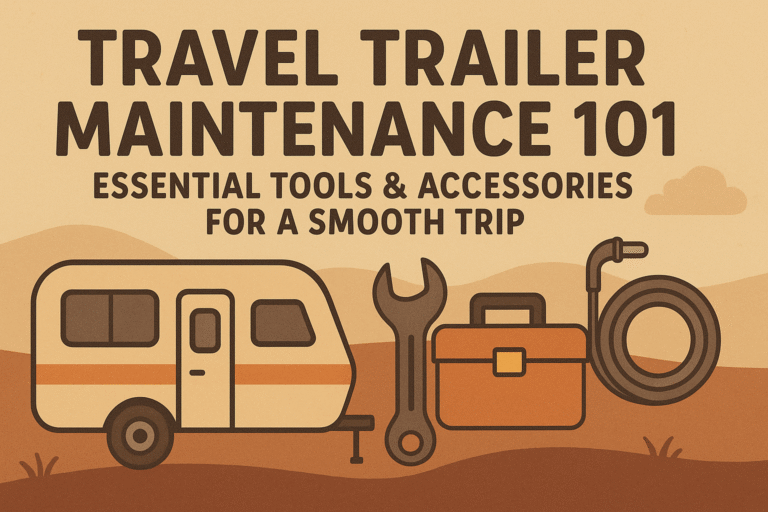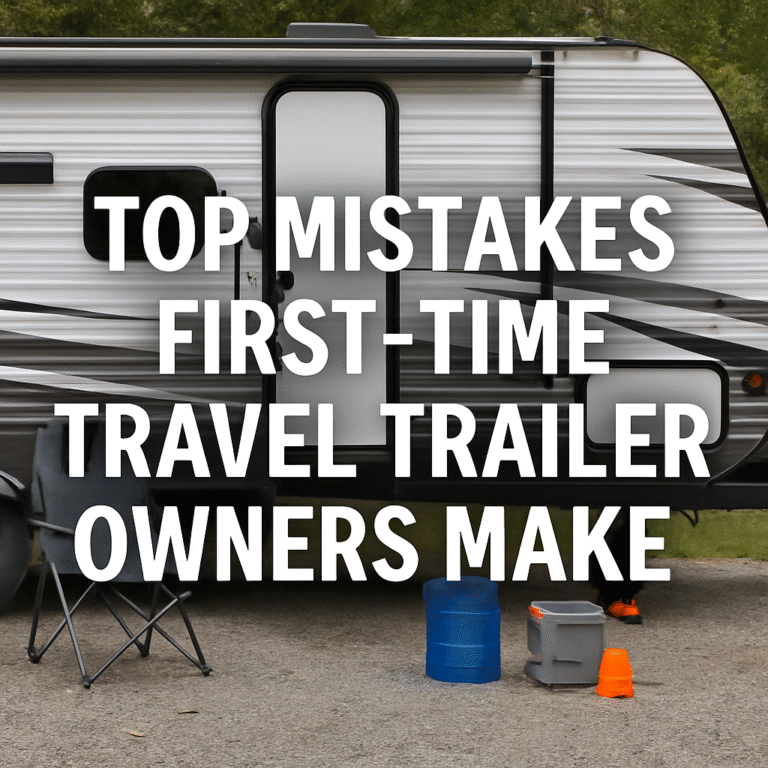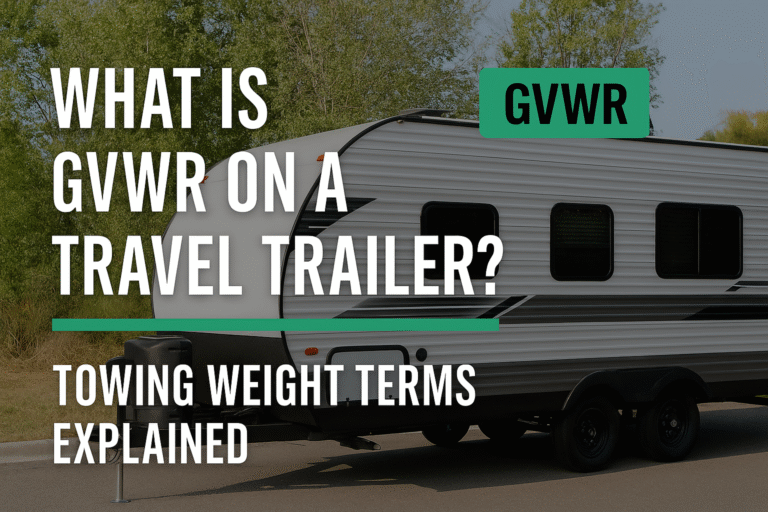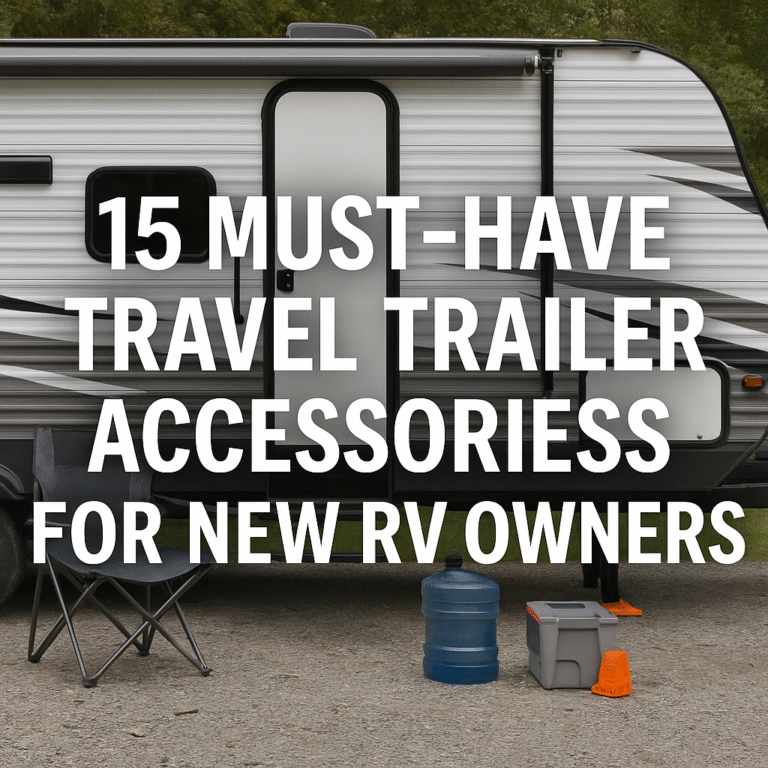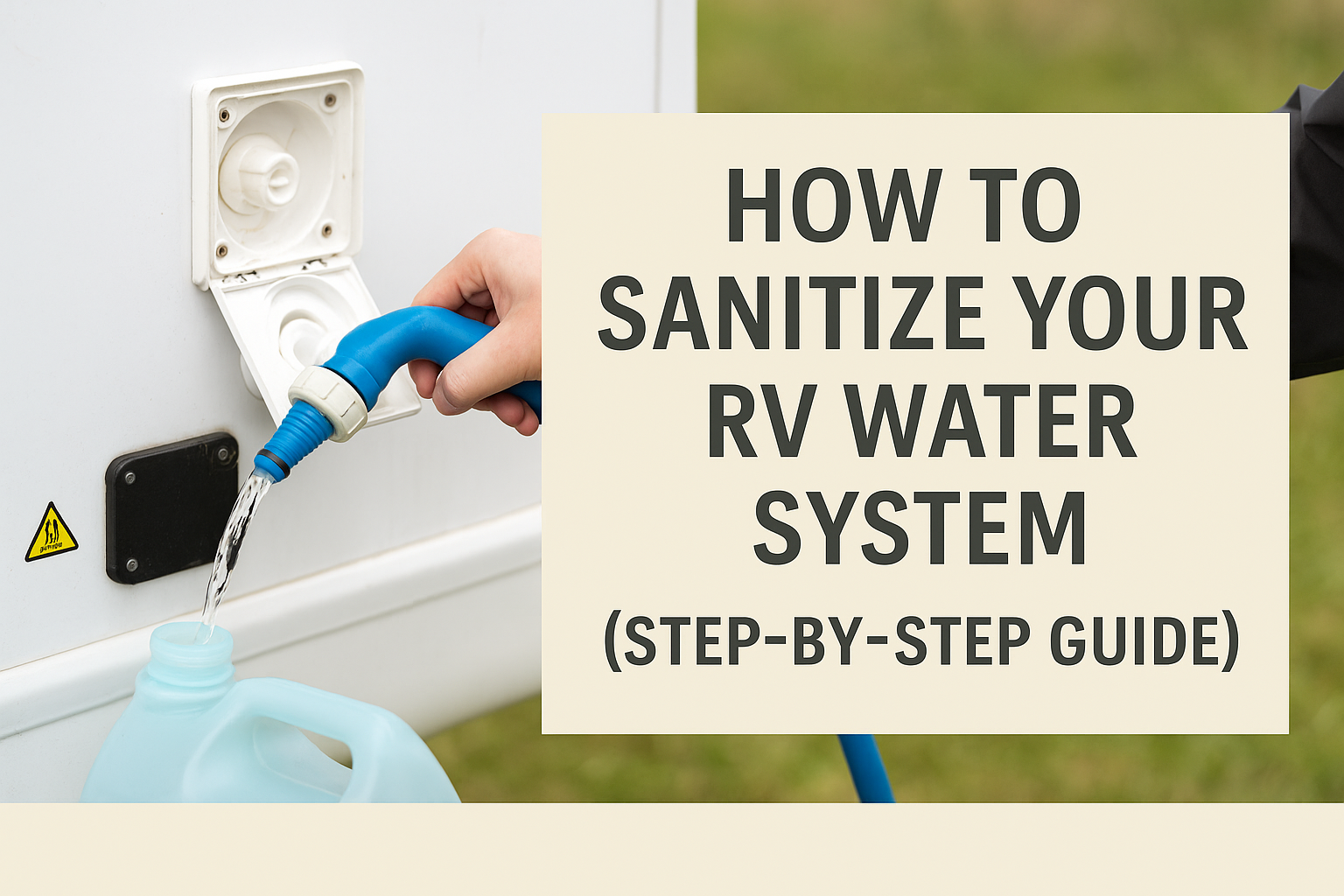
Keeping your RV water system sanitized is essential for clean, safe drinking water on the road. Without regular cleaning, your fresh water tank and plumbing can become breeding grounds for bacteria, mold, and algae — especially if your RV has been sitting idle for weeks or months. This complete guide walks you through the exact steps to disinfect your system, what tools you’ll need, and how often to do it.
📋 Table of Contents
💧 Why Sanitize Your RV Water System?
Even if you’re using clean, potable water, your RV’s plumbing system can develop harmful microbial buildup over time. Warm temperatures, stagnant water, and dark environments inside your tank provide the perfect breeding ground for:
- Bacteria like E. coli and coliform
- Algae that can clog filters and leave green slime
- Mold or mildew that creates musty odors
Regular sanitization helps ensure your water is safe for drinking, cooking, brushing your teeth, or washing dishes — and it also extends the life of your pump and plumbing.
🔧 Tools & Products You’ll Need
Here’s everything you should have ready before you begin the process. Most are inexpensive and easy to find:
- Camco TastePURE Drinking Water Freshener – Neutralizes odors and improves taste
- Dedicated RV water hose – Only use hoses labeled for drinking water
- Measuring cup & funnel: Makes it easier to add bleach or sanitizer without spills
- Household bleach (unscented) or RV-specific sanitizer: Used for disinfection — always follow safety instructions
- Latex gloves & clean bucket: Keep things sanitary and protect your hands when mixing bleach
🛠️ Step-by-Step Instructions
Here’s how to fully sanitize your RV water system, from start to finish. This process takes 12–24 hours (most of it is soak time).
- Turn off your water heater and pump. If using shore water, disconnect the city water hose. Open all faucets to drain existing water from the system.
- Mix your solution: Use 1/4 cup of unscented bleach for every 15 gallons of fresh water tank capacity. Example: a 60-gallon tank needs 1 cup of bleach. Mix in a bucket with a few gallons of water.
- Pour the mixture into the freshwater tank using a funnel, then top off the tank with potable water until it’s full.
- Turn on the water pump and run each faucet (hot and cold) until you smell bleach. This ensures the sanitizing solution fills your water lines.
- Let the system sit for 8 to 12 hours. Leave it overnight for best results — this gives the bleach time to kill any bacteria or mold.
- Drain the entire system. Open all faucets and low-point drains. Flush until empty.
- Rinse thoroughly: Refill with fresh water and flush again through all faucets. Repeat until the chlorine smell is completely gone.
✔️ Pro Tips for Clean Water
- Sanitize at least twice a year or anytime your RV sits unused for 4+ weeks.
- Always use a drinking-water-safe hose — regular garden hoses can leach chemicals.
- Store hoses and accessories in a sealed container or clean bin to avoid cross-contamination.
- Keep water tank full between trips to reduce air exposure and algae growth.
- Use water test strips periodically to check for chlorine, pH, or bacteria levels.
🙋 FAQ: RV Water System Sanitizing
Can I use vinegar instead of bleach to sanitize?
Vinegar is useful for deodorizing, but it’s not strong enough to kill bacteria or viruses. Stick to unscented household bleach or RV-safe sanitizers for a thorough disinfection.
How do I get rid of the bleach taste or smell?
Flush with fresh water multiple times until the smell is gone. You can also add a tablespoon of baking soda to a gallon of water and run that through the system to help neutralize the odor.
How often should I sanitize my RV water system?
Every 6 months is ideal, but also sanitize:
- Before your first trip of the season
- After storing the RV for more than 30 days
- After filling from an unknown or questionable water source
🏁 Final Thoughts
Sanitizing your RV water system is one of the simplest yet most important tasks to ensure safe, great-tasting water while camping. It protects your health, preserves your plumbing, and gives you peace of mind — especially when boondocking or camping in remote areas.
Make this process part of your regular RV maintenance routine and you’ll never have to worry about funky odors or water-borne bacteria again.

